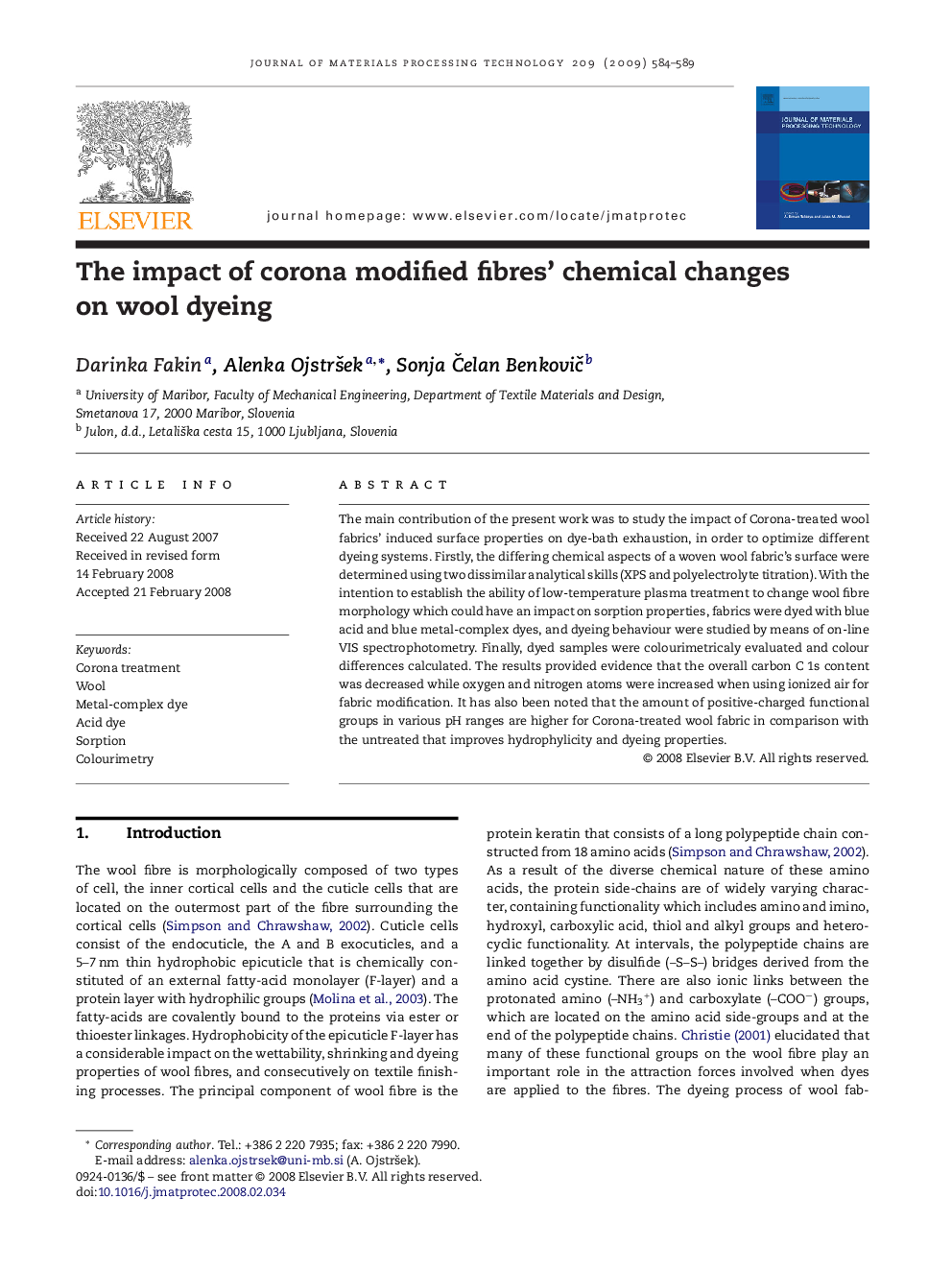| کد مقاله | کد نشریه | سال انتشار | مقاله انگلیسی | نسخه تمام متن |
|---|---|---|---|---|
| 798689 | 903284 | 2009 | 6 صفحه PDF | دانلود رایگان |

The main contribution of the present work was to study the impact of Corona-treated wool fabrics’ induced surface properties on dye-bath exhaustion, in order to optimize different dyeing systems. Firstly, the differing chemical aspects of a woven wool fabric's surface were determined using two dissimilar analytical skills (XPS and polyelectrolyte titration). With the intention to establish the ability of low-temperature plasma treatment to change wool fibre morphology which could have an impact on sorption properties, fabrics were dyed with blue acid and blue metal-complex dyes, and dyeing behaviour were studied by means of on-line VIS spectrophotometry. Finally, dyed samples were colourimetricaly evaluated and colour differences calculated. The results provided evidence that the overall carbon C 1s content was decreased while oxygen and nitrogen atoms were increased when using ionized air for fabric modification. It has also been noted that the amount of positive-charged functional groups in various pH ranges are higher for Corona-treated wool fabric in comparison with the untreated that improves hydrophylicity and dyeing properties.
Journal: Journal of Materials Processing Technology - Volume 209, Issue 1, 1 January 2009, Pages 584–589